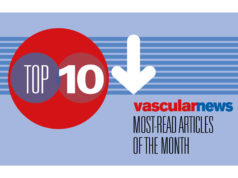
President of the German Wound Council, Martin Storck, considers how to improve the treatment of chronic wounds. While the road to better treatment “may still be long,” he says, “it is a road worth going down”.
“On average, a patient in Germany has to suffer from a chronic wound for three and a half years before it is properly treated—this not only means incredible pain, but is simply unacceptable in a highly developed country.” This statement by Matthias Augustin (University of Hamburg, Hamburg, Germany), former president and founder of the German Wound Council, draws a dark picture of the general situation. As director of the Institute for Health Services Research in Dermatology and Nursing Care Professions at the University Hospital Hamburg (Hamburg, Germany), he has many years of experience in health services research in the field of chronic wounds.
Good treatment can be a matter of luck
Around 900,000 people in Germany suffer from chronic wounds. How well the wounds are treated depends on the expertise of the physician a patient sees. And on where a patient lives: In the countryside, if there is no specialist or wound care centre nearby, the GP is the first physician these patients see. “But from the very outset we also need to start at other points in the chain of care in order to make changes to the treatment of chronic wounds, which is often inadequate”, says Augustin. “Because although we have guidelines on care, physicians, nurses and physiotherapists are still unsure as to when something should be diagnosed and how it should be treated”, the expert explains.
Because this state of affairs seemed untenable to them, the German Wound Council has taken the initiative and appointed 13 specialists to formulate standardised recommendations for the treatment of chronic wounds and to develop a graduated concept as to when which discipline or professional group should become involved. The working group included physicians from various fields of specialisation, representatives of the German Nursing Council, but also representatives from the Federal Associations of Health Insurance Funds and industry, as well as lawyers and politicians.
Targeted treatment in a timely manner
The result is a consensus recommendation that factors in the experience of physicians from different disciplines and of representatives of professional associations, patient initiatives, industry, health insurance funds, hospitals and wound care centres. “One of the key fundamental concepts is that the targeted diagnosis and professional treatment of chronic wounds needs to occur as early as possible”, says Prof. Dr. Martin Storck, Director of the Department of Vascular and Thoracic Surgery at the Karlsruhe Academic Teaching Hospital. What sounds simple can prove to be difficult in practice. “A chronic wound is almost always a symptom of an underlying disease. In addition to local treatment, you also need to determine whether, for example, the patient has an arterial or venous circulatory disorder, since these cause up to 90% of chronic wounds in the lower extremities”, Storck elaborates. So the experts recommend establishing a mandatory guideline that explains and defines which profession is responsible for what, and when specialists or wound care centres should become involved.
Networks of care and guides for the right treatment
So that a patient with e.g. an infected chronic wound progresses from the GP to the right specialist or wound care centre in a timely manner, the expert group recommends establishing networks of care. Ideally, the first physician the patient visits should see him- or herself as the patient’s guide through this network of experts. “If we have clear guidelines, because of their training and experience physicians can better assess what they are capable of treating and when they should refer the patient to a specialist”, says Bernd Gruber from the German Nurses’ Council. Wound care centres, which have already been established in several German states, serve as role models for these types of networks. They involve the collaboration of different professions, i.e. physicians, nurses and physiotherapists, which needs to be both open-minded and close. “In the case of a chronic wound, no practitioner can achieve the best results on his or her own. All the necessary steps need to be coordinated with each other”, says Veronika Gerber from the “Specialist Association Initiative Chronic Wounds (ICM) e.V. Quality assurance and documentation can also be achieved through certifications, says Joachim Dissemond from the Dermatology Department, University of Essen. Another issue are the reimbursement structures in Germany, which are completely non-standardised and very different from region to region.
Encouraging a wide-ranging discussion of the recommendations
The road to better treatment of chronic wounds may still be long – this too is something on which the 13 experts agree. Using the platform of the German Wound Council, they are seeking to encourage a wide-ranging discussion about their recommendations. But according to them, it is worth going down this road. Timely and professional therapy can lead to excellent results when treating chronic wounds, and it practically always reduces the suffering of those affected and improves their quality of life. Costs induced by unnecessarily extensive treatment are also reduced.
Martin Storck is president of the German Wound Council, director of the Department of Vascular and Thoracic Surgery at Karlsruhe Academic Teaching Hospital in Karlsruhe, Germany.











